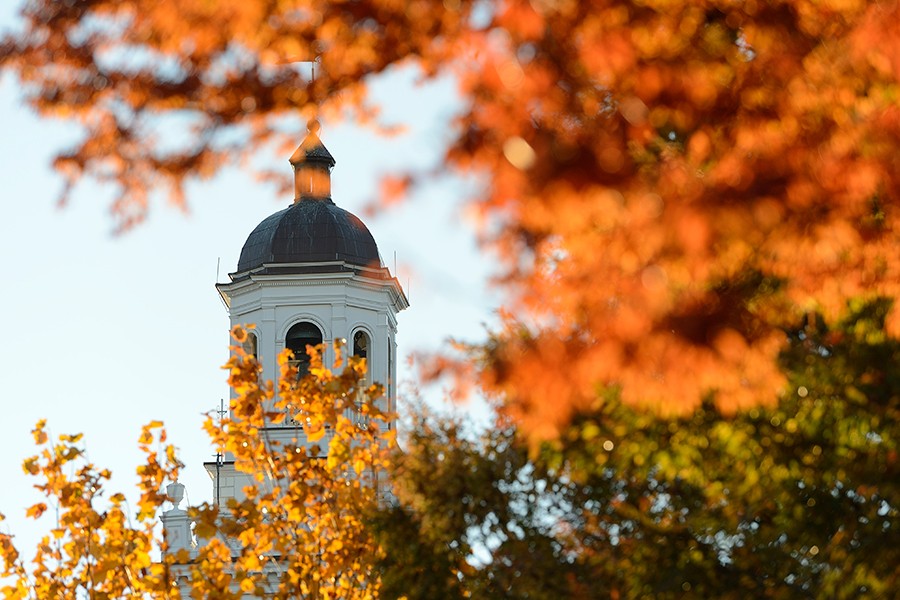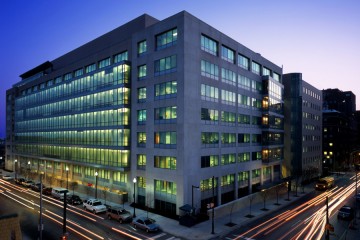Johns Hopkins University has climbed to 10th in the newest U.S. News & World Report "Best Colleges Rankings," released today. That's up from 12th last year and 16th as recently as 2006.
The university also moved up from seventh to third in this year's U.S. News survey of high school guidance counselors.
The university has worked comprehensively over the past decade to enhance and strengthen the undergraduate experience. It has expanded research opportunities, built and renovated state-of-the-art academic buildings, and introduced new co-curricular offerings to help develop every student not only as a scholar but also as a contributing member of society.
Those initiatives are tied together by improved financial aid to ensure that a family's economic circumstances do not keep a deserving student from attending Johns Hopkins, President Ronald J. Daniels said.
Building on the previous administration's efforts, Daniels in 2013 set boosting the undergraduate experience as one of the goals of "Ten by 2020," a report laying out the university's vision and action plan for the remainder of the decade.
"At Johns Hopkins, we are committed to nurturing the best young minds in an environment that prizes intellectual creativity, discovery, and service to our world," Daniels said. "This commitment in all its forms—curricular innovation, student support, and unparalleled opportunities for undergraduate research—is a testament to the dynamism of this place and its exceptional faculty and students."
Added Jeffrey H. Aronson, chair of the university's board of trustees: "What a great moment for our university. It reflects the collective accomplishments and spirit of our entire community—faculty, students, alumni, staff, and leadership."
Here is a breakdown of some of the initiatives on improving the Johns Hopkins undergraduate experience over the past few years:
Undergraduate Research
Johns Hopkins has strengthened its traditional commitment to opportunities for undergraduates to conduct original research and scholarship and pursue original artistic creations. It is not unusual at Johns Hopkins to find undergraduate students working alongside pre-eminent faculty or even Nobel laureates to answer tough questions and uncover cutting-edge solutions to the world's most pressing issues.
Among the newer programs in the Krieger School of Arts and Sciences are the Dean's Undergraduate Research Awards and the Andrew W. Mellon Arts Innovation Grants. In the Whiting School of Engineering, the SPUR initiative sends highly qualified students to the Johns Hopkins Applied Physics Laboratory, where they have worked on projects such as advanced prosthetics, computer vision, and secure mobile communications.
These add to opportunities that have long been available through the Provost's Undergraduate Research Awards, created in 1993, the Woodrow Wilson Fellowships, the William F. Clinger Jr. Award, the Bander Family Fund for independent summer projects, and apprenticeships in labs and research projects throughout the university.
There are even courses focused on original research. In "Phage Hunting I and II," freshman biology students isolate, characterize, and sequence the genomes of previously unidentified bacteriophages. Engineering students work in teams to design medical devices and attack other technology problems as early as their freshman year.
In the Classroom
Undergraduates are more likely now to be closely engaged with their professors, a result of efforts at Homewood to enhance teaching and learning through smaller classes and engineering research tutorials.
An expanded slate of Freshman Seminars allows students to start thinking across disciplines and explore topics such as tombs in ancient Greece, climate change, or slavery and cinema. The Gateway Sciences Initiative has generated innovative technology and educational techniques for introductory science courses.
The university now offers the nation's first undergraduate minor in computational medicine, as well as new minors in social policy and visual arts, and an interdisciplinary major in medicine, science and humanities.
Students are increasingly exposed to education and research that lies at the crossroads of multiple disciplines, including through the arrival of more than a dozen new Bloomberg Distinguished Professors, who teach undergraduates as part of their cross-specialty collaboration.
More than 450 students major in public health and receive instruction from faculty members from the Bloomberg School of Public Health; hundreds more work with faculty in clinics and laboratories at the Bloomberg School and the School of Medicine.
Academic Facilities
The newest academic facility for undergraduates is the just-opened Film Center, a joint effort of Johns Hopkins and the Maryland Institute College of Art; the center is housed in the former Centre Theatre in Baltimore's Station North Arts and Entertainment District. It joins the recently completed, environmentally progressive Brody Learning Commons, a technology-driven collaborative learning and study space, and the Undergraduate Teaching Laboratories, built to facilitate interdisciplinary study and research in the life sciences.
A better-than-new $73 million renovation of Gilman Hall, the landmark 1915 humanities building on the Homewood campus, was completed in 2010.
Outside the classroom
The university has also turned its focus to the co-curricular experience, expanding opportunities for local and international internships, developing ways for undergraduates to learn about, get involved in and contribute to Baltimore, and growing its programs on diversity and inclusion. Two years ago, the university created an office to coordinate LGBTQ student life. Last spring, it staged the first of its Race in America Forums, a new series designed to share thoughts and advance the dialogue on race relations around the country.
For years, students have managed the Milton S. Eisenhower Symposium and Foreign Affairs Symposium lecture series, and university-sponsored speaker events also draw many attendees.
The Johns Hopkins athletics program was the second-most successful in all of NCAA Division III last year and produced one of just 30 nominees nationwide for the NCAA Woman of the Year award.
Financial support for students
These enhancements have been accompanied by investments in financial aid for undergraduates. Over the past five years, institutional grant aid has increased 38 percent, from $55.1 million to $75.9 million a year. Nearly all of that increase was in need-based aid. The past four freshman classes have been admitted to Johns Hopkins need-blind, allowing the university to admit excellent students without regard to their families' ability to pay.
Student aid is one of the priorities of the university's current Rising to the Challenge fundraising campaign.
Admissions
The focus on undergraduate academics and student life appears to be resonating with potential students, said David Phillips, vice provost for admissions and financial aid.
"Applications for the class of 2019, which has just arrived on campus, numbered nearly 25,000, a record number and our strongest applicant pool ever," Phillips said. "Top students from across the country and around the world see themselves at Johns Hopkins."
Posted in University News









